Fire Tools
|
Administrator
|
This post was updated on .
Greetings. Thanks for your patience. It takes forever, it seems, to upload pictures into the Forum, particularly in the large size. It was suggested that I make some comments about the fire tools that were so common on C&S locomotives. My information on these, comes from old fireman Doug Schnarbush who worked the West End between Como and Leadville from 1927 to abandonment in 1937. It was a real privilege to be able to sit and talk with him, as often as I did. On several trips, Todd Hackett was with me and I believe John Coker and Joe Crea were with us at least once.
Because of the nature of operations on the C&S, multiple engines were used on the extra freights and as a result, slow speeds were the rule, not the exception. Due to the slow speeds on the freights, low draft was a problem causing cinders to clog the flues and the grates formed clinkers. #74 was notorious for clinkers over the #4 axle under the firebox. I've mentioned before that I bought my first On3 locomotive in January, 1980, at a time when I was also involved with the cosmetic restoration of #74 in Boulder's Central Park. So I had unrestricted access to the engine through the process of rebuilding my model. I also learned the importance of studying details in every photograph I could get my hands on. One of the things that became almost an amusing Easter Egg hunt was to identify the numerous devices that were used to help fire the engine. I've never tried to find these on many other engines, but most were equipped with fewer tools than #74. Here is a brief description of the tools that were commonly used in varying combinations on locomotives. Auger. This is a comparatively long straight tool with a screw like end. These were used to bore the flues from the front end. Every Locomotive on every train on the West End stopped for water and coal and to bore the flues. Not to do so caused all sorts of problems. These are very easy to identify because they are so long. They might be found resting in the handrail stanchions on the left side, or hanging on the left side of the tender, Often, the augers were hung from a hook on the front of the left side of the tender, and the bottom rested on the flooring if it extended beyond the cistern. Even in On3, I haven't come up with a way to represent the screw. Last week, Chris Walker posted a picture of #9 at Como where the fireman is carrying the coal gate to the rear. If you look for that picture again, the auger is hanging on the side and you can see the screw on the end. The other end, typical of most of these tools, has a formed circular handle, used for working the tool and for storage. Rake. This is also a tool of varied length for use in spreading the fire and also dragging clingers free. These have a U shaped end welded to the rod. Clinker Hook. These are also tools of varied length with a 90 degree bend at the end. These were used to try to keep clinkers from forming in the firebox. These might be most commonly found above the coal gate. The handle would be stored with the round handle on the left side, so it would not burn the fireman's hand if he needed it for a troublesome return to the fire. The hot end would be on the right side behind the engineer. Clinkers, if you are unaware, are sometimes formed from improperly burning and becomes a fused mess. This can also choke the draft through the grates. Sometimes these are found on the left side of the tender with the longer auger. Corner Hook. This is a shorter hook that is meant to be used in the rear corners. These are not unusual to see hanging from a stanchion on the left side behind the smokebox. #74 3/4 Right Front: Corner hook below the sand dome, and what used to be a long rake for the long firebox. The U is missing. Hasn't been a priority to fix it. But I will when Ken, the fireman bitches about it. Again. 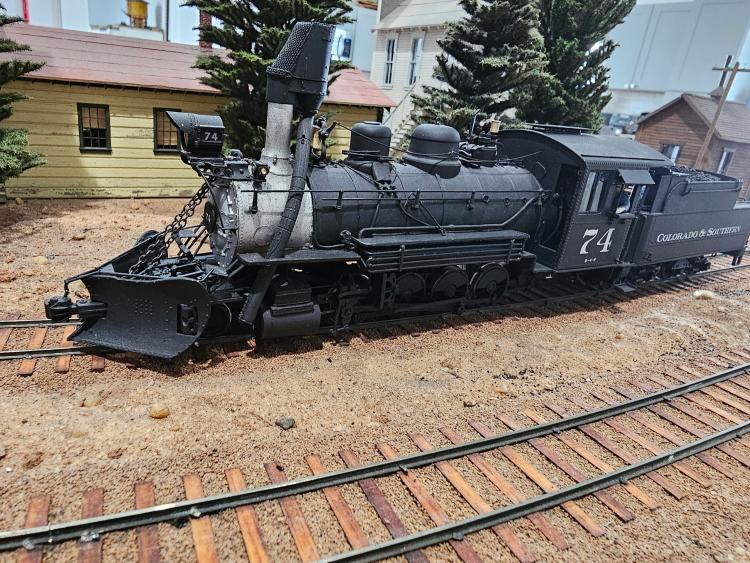 #74 3/4 Left Rear Elevated: A medium rake stored over the Coal Gate. The long auger in on it's hooks and extends beyond the bunker as seen in the first picture. 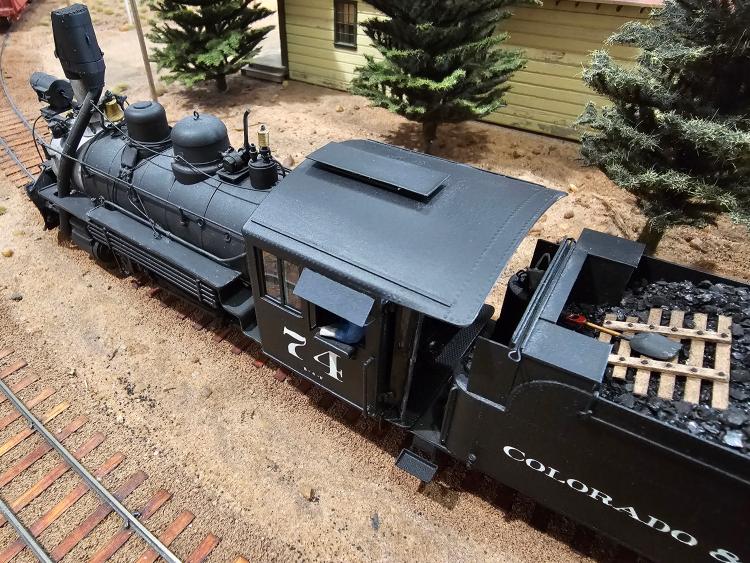 #8 Left side Tender: Both a clinker hook and auger on the tender. Small hook over the coal gate. 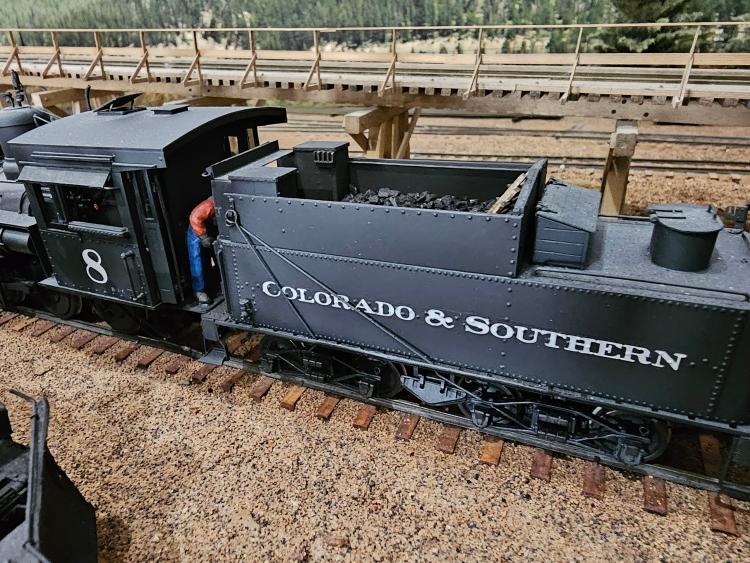 #73, #71 Left Side: Augers on the tenders, corner hooks in the stanchions, Both have longer hooks in the stanchions too. 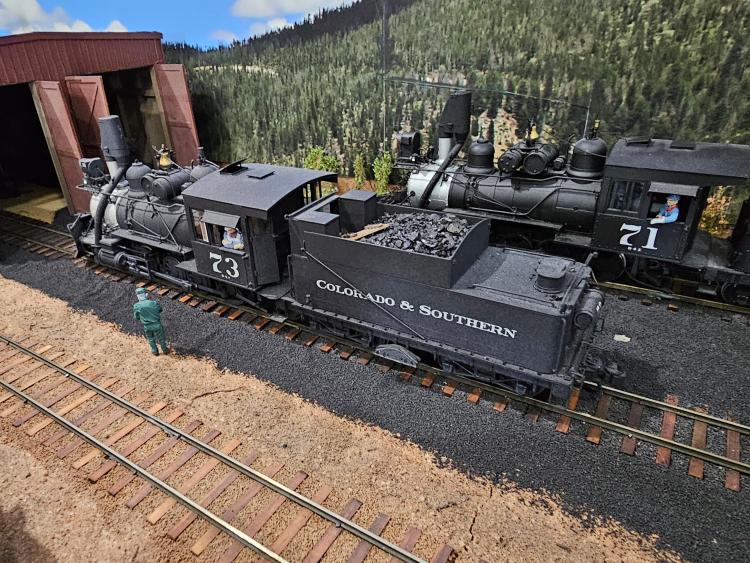 #60 Left Side: Auger on the side, a fairly long medium hook over the coal gate, and a long hook in the stanchions. Note the round cover on the roof for a canvas fire hose. I have modified the left side branch pipe so water can be pumped from the injector. It helps to have worked on #60 too! Also cut down the flooring to correct width. Jan Rons made me do that. And added the second hatch. Carry an OMI plow. This tender cistern is dimensionally identical to #6. 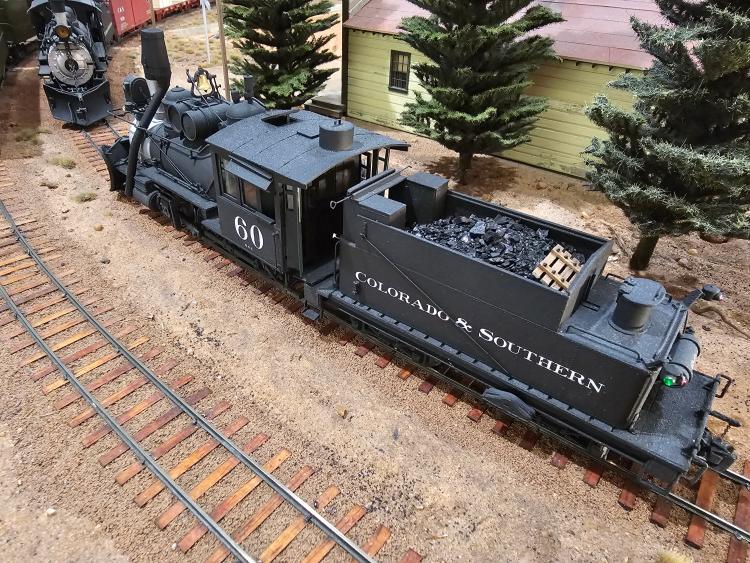 BR 4 62 Scoop: This sideways picture shows the scoop my Dad used on the last run of C&S Steam in 1962. #638 from Denver to Trinidad, where it still sits on display. It is stamped "BR 4 62". Burlington Route #4 62" I paint all my scoops like this. 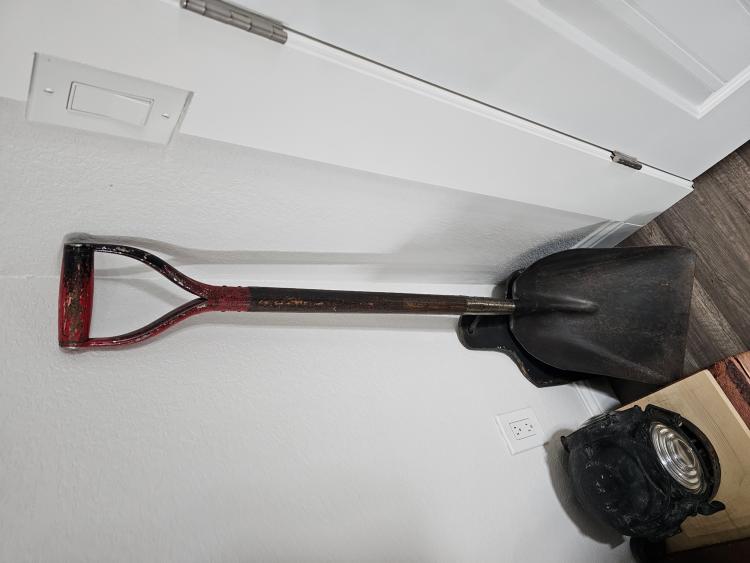 |
|
Great thread! Thanks for posting it, and the detailed pictures. I had forgotten about he auger, and makes me think of a way to make one in O scale. Definitely a challenge. Also great that you still have that shovel.
|
|
In reply to this post by Mike Trent
Hello Mike I have not tried this but how about wind thin wire around a small metal thread screw, might work.
|
|
Administrator
|
I don't know, Paul. Might work! Never say no, right?
|
|
Administrator
|
In reply to this post by Mike Trent
A few comments about #537. As the only engine of this type on the C&S, it had its own characteristics which caused the firemen to have to make changes in their routine to fire it. Firemen on the East End between Denver and Como were out of Denver, where they all had worked larger Standard Gauge engines with wide, square fireboxes. On the West End, every engine the firemen had worked had long, narrow fireboxes. So when they got #537, they all had to figure out how to deal with that wide firebox. Doug said that they could just throw coal in there, and make sure they had it spread the way the engine liked it, and if they did it right, they could "practically fire it sitting down". But when Denver sent up loads of Trinidad coal, it always made firing more difficult on all the engines, but especially the way they had to fire #537. Ed Haley gave me a wonderful 3/4 rear print of the left side and it was super helpful. It showed the rear of the cab, and three fire tools. To bring up details, I used a small device called a linen tester, which had a magnifying lens in its own frame which filed open and allowed light under the lens from all directions. Placing the tester over a print gave an excellent view of about a 1" square area. These may be available on ebay. I wish I knew where mine is now. It was extremely helpful. especially in the days before this kind of magic could be done on a computer. Another advantage was that with the linen tester sitting over an area I was trying to glean detail from, it was perfectly placed on my work surface and all I had to do was put my eye to the lens to make sure what I was seeing there was what I was trying to accomplish on the model. Yes! They are available on eBay. Search for "Fabric Linen Tester". For a mere sum of $9.05, you should add this to your tools! It works on printed photos also, but it is wonderful on real prints. It was with this little device I found the almost invisible round handle of the clinker hook over the coal gate. Also visible were another hook along the left running board and a longer one on the left side of the tender. What I never saw on any of my photos was any evidence of an auger on this engine. But there probably was one in the bunker.
Two photos of the now 40 year old #537. She's still enjoying an active career on the West End and a frequent sight through Dickey as a helper engine. Today, as the rear helper on the Westbound Extra. 40 years? Really? Yep. I was only 34 years old then when this was converted from an ancient Balboa C-21. 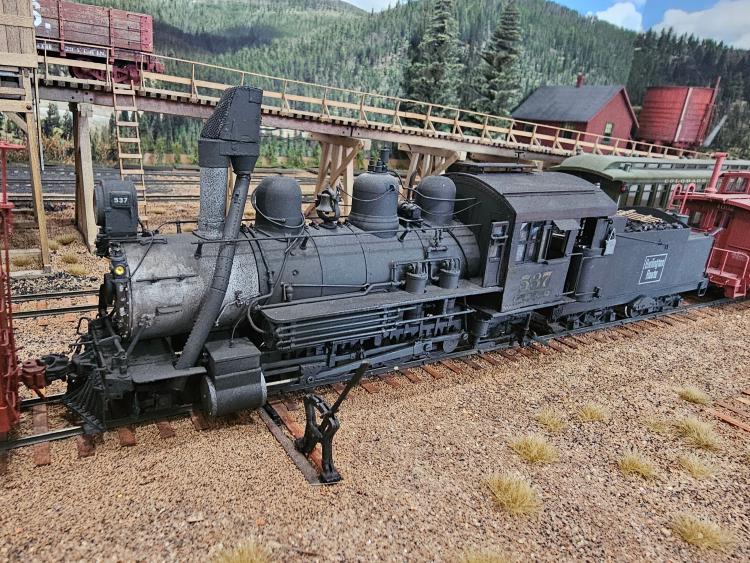 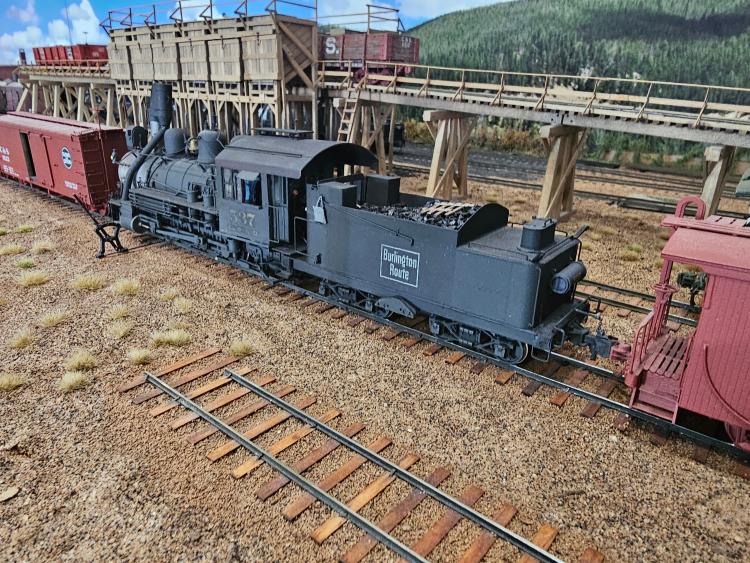 |
|
In reply to this post by Tim Schreiner
Most difficult in that scale. Beating the end flat and twisting like the Blacksmith would do, might work.
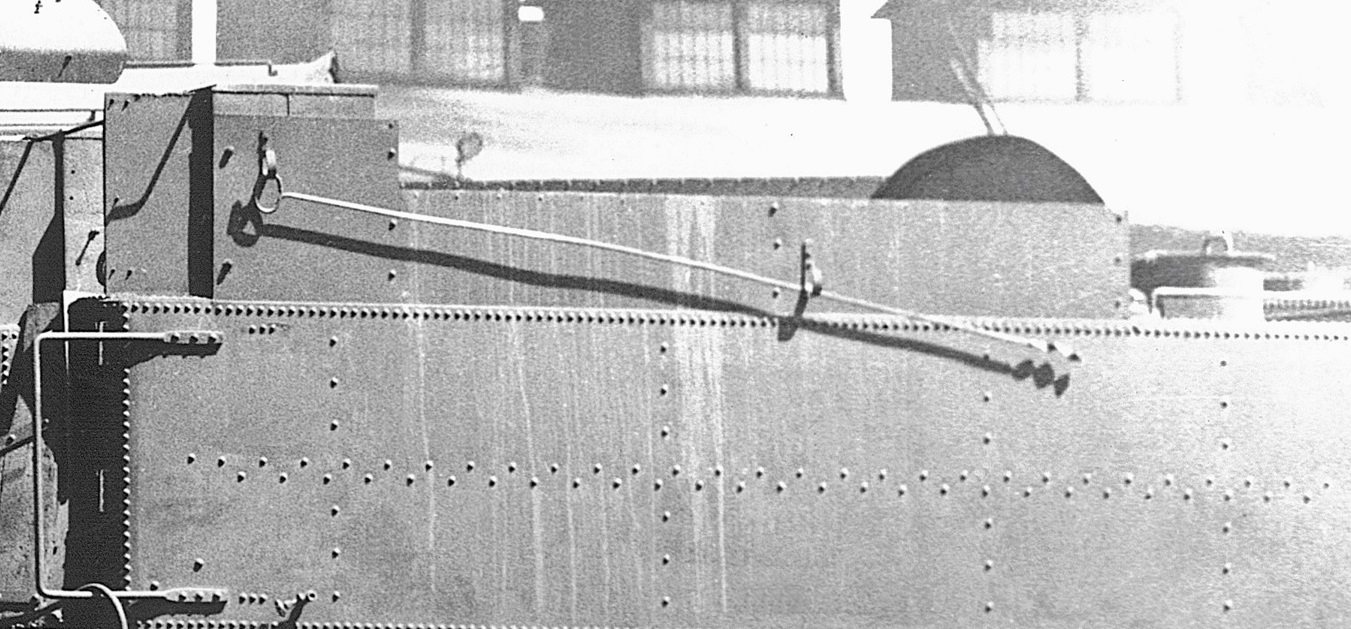 DPL OP-6058 excerpt 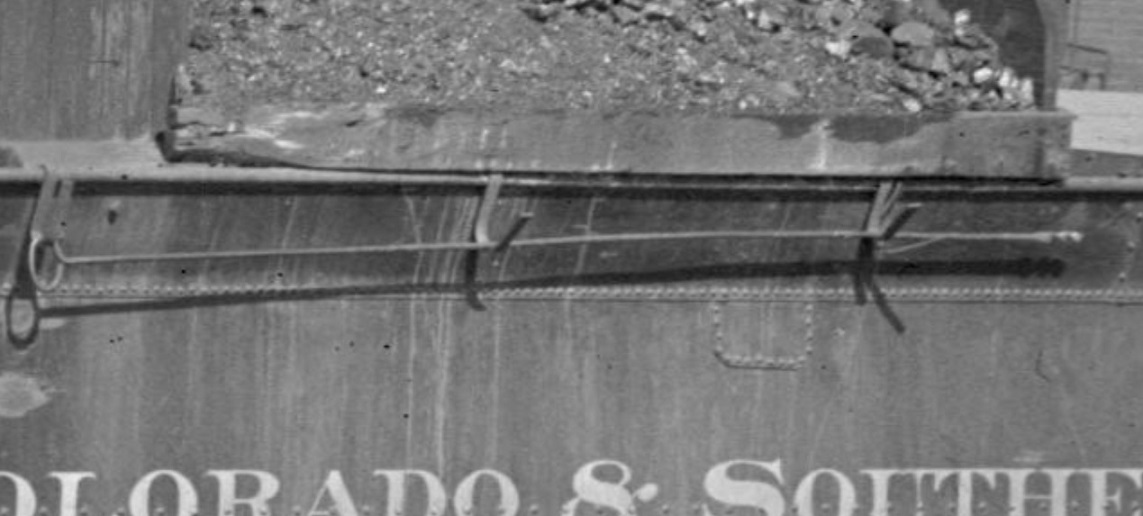 Down here we call those things an Ore-gurr. 
UpSideDownC
in New Zealand |
|
In reply to this post by Mike Trent
Mike, thanks for the most excellent post!
I knew about the ore-grrr and the clinker bar, but not the others. I have some of these formed and need to outfit all the locomotives appropriately. I model mine out of fine wire; the spiral could be simulated with some tiny slashes of silver paint. D&RGW locomotives frequently have water bags hanging off the cab or tender. These are less frequent on the C&S, though they appear occasionally. I suggest that the east end crews had better access to treated water and we don't know about the west end as they worked later in the day and are less often photographed. There should also be a grip on the deck, or perhaps a tool box. Speaking of tool boxes, should there be a wrench on the pilot deck so they can open the smokebox and ream out all those flues? Lastly, don't forget the extra coal scoop. In many of the trains photographed leaving Denver, I see an extra coal scoop jammed between the injector pipe and the boiler, just ahead of the fireman's side of the cab. Something you never see on D&RGW locos.
Keith Hayes
Leadville in Sn3 |
|
Administrator
|
This post was updated on .
Thanks, Keith! I'd use black, not silver for the auggrrr, as they were filthy and dark as the inside of a black cow at midnight with no moon. I'm leaving mine as is. I'd suggest a pick to break up big lumps, but not on all of them. I have some, but can't find them! Most all of my engines have tool boxes which probably had tools in them. I doubt they'd leave a wrench out there, but it's a thought. My #74 has an oil can, a tallow pot, and two wrenches on the water legs next to the water shutoff valves. I put them on for eye candy when I built it, and put them on again after I narrowed the tender about 8 years ago. #537 has a water bag, #75 has an extra scoop. I have extra scoops, I'll have to get them painted up. and carry a few of them as you suggest! The West End trains worked about the same hours as the East End trains because they essentially switched consists at Como on "train days". But it was a lot harder to get up there from Denver to photograph them unless it might be a holiday. Thank goodness Brownie Anderson carried a camera! I think the tender tool boxes may have carried the tender markers and signal flags too. The coal gate boxes at the front had doors where the guys could store their lunch and thermos'. Which might help explain the lack of waterbags. #537 has one because it did in the picture I described. Like the extra scoop on #75's hook behind the cab. I'll confess, I haven't noticed the extra scoops stored behind the branch pipes ahead of the cab. Sure makes sense. Thanks for that. Ah-Ha! #75 had a non lifting injector on the fireman's side. So, no branch pipe in front of the cab.
|
|
Only semi-related, .... I purchased a short back corner hook in a
Salida antique store than I *might* assume is D&RG stock. Also got a freight car side grab bar at the same place. Old stuff, ... ... blacksmith forged. I found the hook so damned useful with my woodstove firebox operations that I made more of them. I do that sort of fabrication/blacksmithing in ornamental iron fence restoration work, so it was a snap. If mine were pitted, they would look 100+ years old too. I often justlook at them and find pleasure in the workmanship. I don't think the railroad guys cared, and thusly beat them like ordinary tools. Being a proudly dull man, I get satisfaction just looking at them and knowing how functional they are, and that the design is a direct rip-off of Victorian era steam operations.
"Duty above all else except Honor"
|
|
Administrator
|
Good to hear from you, SP!
|
|
In reply to this post by Mike Trent
Mike, thanks for this very interesting and helpful info on the tools and their use. These are easily missed unless looking closely and with awareness.
The problems forced by the mountain running must date back to 1877 but as someone interested in the South Park and DL&G periods I don't recall seeing much evidence of these tools in the first 15-20 years of the line. You got me wondering enough to take another look and on the first pass so far I'm not finding much. Occasionally hooks for hanging a rake on the coal bunker extension boards (and often empty), a tool resting on the coal pile, one poking up from the area between the coal bunker extension boards and the tender flare sheet. None over the coal bunker opening so far. Masons seem mostly bereft of visible tools. Late '80s and early '90s Brooks photos rarely show tools or hooks but we see tool boxes hanging under the cab on one or both sides. As we enter the Trumbull DL&G era tools become more visible. Even the early C&S seems varied in what we see. If anything, the photos suggest lack or inconsistency that couldn't have been the reality. Is it just my eyesight (and knowledge) missing things or was there an aesthetic view in the 1880s-early 1890s to hide these tools? Was the standard on tender engines to place them mostly hidden between the tender flare sheet and the coal bunker side boards? Where to hide a longer tool on the Masons...I plan to take a closer look for hangers below the floor boards. I also wonder if burning Baldwin coal led to different, fewer, or more issues for the engines between 1882 and 1910? I won't be looking at a loco photo the same from now on. Thanks for this great post.
Dave Eggleston
Seattle, WA |
Re: Fire Tools - Preferred Coal Source
|
Administrator
|
This post was updated on .
Hi Dave. The smaller engines wouldn't need long tools. Over the years they probably figured out a lot of things to keep them going. I made reference earlier to Denver (C&S) delivering Trinidad coal up on the NG to the dismay of all the firemen. I'm sure that affected the evolution and use of these things. What they preferred by far was coal that came from the Western Slope.
Doug said that the best coal the C&S received in Denver and also used on the East and West Ends came from Oak Creek Colorado. Southwest of Steamboat Springs. It was hauled to Denver on the D&RGW, and was far superior to "Trinidad" coal. |
|
Administrator
|
In reply to this post by Chris Walker
Ha Ha! You're too much, Chris! Too much. When are you ever coming back to these parts?
|
|
In reply to this post by Mike Trent
Mike, I've now found a few photos of the Colorado Central porters in the 1870s with everything stacked on the coal load on their tiny tenders. Coal gate, rakes, shovels all tossed on top. None of the tools long at all, of course. Nothing tucked on the handrails or under the engine I can make out.
Dave Eggleston
Seattle, WA |
«
Return to C&Sng Discussion Forum
|
1 view|%1 views
| Free forum by Nabble | Edit this page |

